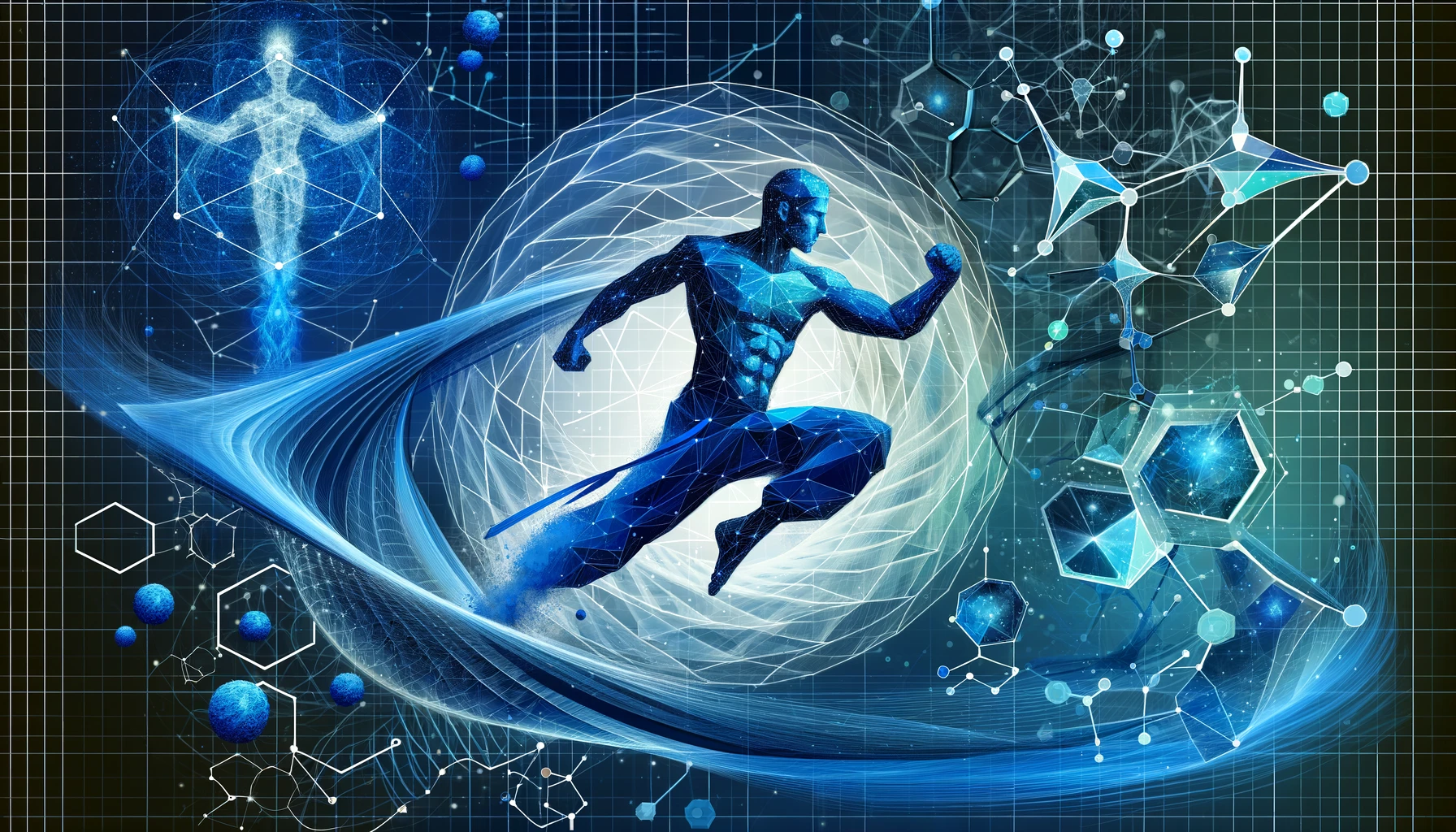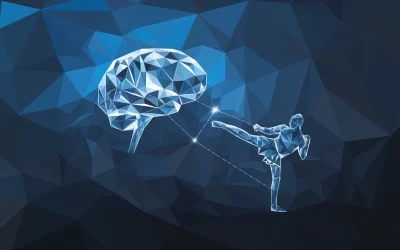Coordination is a critical skill for effective technique, fluid reactions and mind-body unity in martial arts. Understanding the neurological and biomechanical principles behind coordination can provide insight into improving this key ability. This article explores the science of motor control, demystifies outdated “brain control” views and outlines implications for optimizing coordination in martial arts.
The Flawed Puppeteer Model of Motor Control
When we imagine how movement works, it’s tempting to think of the brain as a puppeteer controlling the body. In this simplistic view, the brain directly commands each muscle and joint like a puppeteer pulls strings to move a marionette puppet.
But the “puppeteer model” has major flaws when examined against the true complexity of human motor coordination. To illustrate this, consider a simple movement like drawing a circle in one continuous stroke.
This seemingly basic task actually requires intricate coordination of multiple body parts – the fingers, wrist, elbow, shoulder and even legs and core muscles. If the brain had to individually control the position of each joint and muscle, the number of “control strings” would be astronomical.
Yet we can fluidly draw circles without consciously controlling the angle of every joint or activating each muscle individually. This suggests coordination arises from something more complex than top-down control.
Degrees of Freedom – The Explosion of Complexity
The number of independently controllable dimensions in a mechanical system are called its “degrees of freedom.” For a marionette puppet, the degrees of freedom equals the number of separate control strings.
Estimating the degrees of freedom involved in human movement reveals why the puppeteer model falls short:
- Joints: The elbow joint flexes in 1 plane, but the wrist and shoulder have 3 or more degrees of freedom each.
- Muscles: Multiple muscles coordinated by the nervous system control each joint.
- Motor Units: Muscles contain many motor units that can be activated individually.
For a simple circular drawing motion, this adds up to an astronomical number of degrees of freedom – far too many for direct control. Yet coordination emerges smoothly without us consciously controlling each degree of freedom.
The Rise of Coordination in Movement Science
In the early 20th century, Russian neuroscientist Nikolai Bernstein was one of the first to recognize animal and human movement is coordinated, not disjointed like a puppet. This suggested coordination is a better framework for understanding motor control than top-down control.
Cybernetics, the emerging science of complex systems, expanded these ideas further. It provided a new perspective on coordination present not only in bodies, but also in machines.
In the 1870s, photographer Eadweard Muybridge helped reveal the coordinated elegance of movement through high speed photography of animals and humans in motion. His famous series showing horses galloping settled debates about how galloping worked and provided further evidence against puppeteer-like control.
Beyond Control – Connecting the Brain and Body
If the puppeteer view is incorrect, how does the brain actually coordinate movement with the body? Modern perspectives recognize that structures throughout the nervous system and musculoskeletal system actively collaborate to achieve coordinated motion.
Bottom-Up – Coordination Through Reflexes and Proprioception
Sensorimotor reflex circuits in the spinal cord and medulla coordinate movement through bottom-up processing, without any input from the brain. The knee-jerk reflex is a common example.
In addition, proprioceptors throughout the muscles and joints sense body position and movement. The brain integrates this body sensing to achieve coordination without consciously controlling each muscle.
Top-Down – High Level Strategies, Not Direct Control
The brain does contribute important top-down signals that shape motion. However, these signals provide high-level strategic guidance, not direct muscle control.
For example, when reaching out to grab a cup, the brain sets the overall goal and trajectory constraints. Lower motor circuits in the spinal cord handle the detailed muscle activation patterns to achieve the desired coordination.
Dynamic Interaction Between Brain and Body
Ultimately coordination arises from the dynamic, real-time interplay between the brain and body. Consider a fencer reacting to an opponent’s fake attack. This requires reflexes and proprioception to coordinate a quick, fluid parry without conscious input.
Brain and body work together as an integrated, self-organizing system, not in a rigid top-down control hierarchy.
Principles for Developing Coordination in Martial Arts
Understanding modern perspectives on motor coordination mechanisms provides principles martial artists can apply to enhance their practice:
Hone Proprioception and Reflexes
Drills like balancing on unstable surfaces and performing techniques with eyes closed help improve proprioceptive sensing for better coordination. Quick reaction drills harness reflexes to ingrain automated, coordinated responses.
Strategize Goals, Don’t Micromanage
During practice and sparring, strategize your high-level goals and desired techniques rather than trying to consciously control each muscle. Let your reflexes and proprioception handle the detailed coordination.
Develop Fluid, Unscripted Movement
Practice coordinating reactions without preset actions, like bobbing and weaving then countering spontaneously. This builds ability to fluidly coordinate unscripted motions and reactions.
Unify Mind and Body
Use practices like visualization, meditation and mindfulness to synchronize mental strategies with physical sensation and proprioception. Harmonizing mind and body facilitates coordinated action.
Coordination Science: Implications for Advancing Martial Arts
The puppeteer view of motor control is flawed. Coordination actually emerges from dynamic collaboration between brain and body. Understanding the science behind movement provides principles martial artists can use to improve proprioception, reflexes, reactions and mind-body unity for better performance.





0 Comments